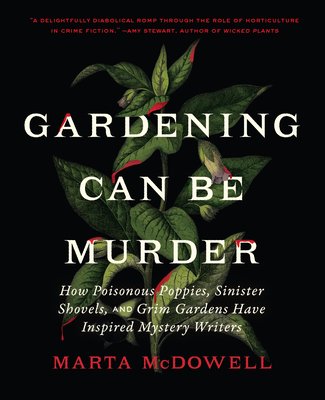
14 Jul Book Review of Gardening Can Be Murder: How Poisonous Poppies, Siniste…
A Gardener’s Guide to Mystery: My Review of Gardening Can Be Murder
As a lifelong lover of both literature and the outdoors, I couldn’t resist the title Gardening Can Be Murder: How Poisonous Poppies, Sinister Shrubs, and Other Garden Elements Have Sown the Seeds of Crime Fiction by the talented author, Judith McDowell. The combination of horticulture and crime fiction struck a personal chord with me. What better way to explore the art of storytelling than through the very gardens where mysteries bloom? This book promises not just an examination of crime fiction but also a deeper dive into the intricate relationship between gardening and the genre, making it a solid choice for fans of both worlds.
From the outset, McDowell’s passion for gardening and writing leaps off the page. She crafts a narrative that’s both informative and engaging, exploring how elements of gardening serve as the backdrop and pivot points for countless crime novels over the last century and a half. The author deftly introduces us to iconic detectives like Nero Wolfe and Miss Marple, highlighting how their green thumbs often intertwine with their sleuthing skills. This aspect resonated with me deeply—I couldn’t help but appreciate how horticulture influences characters’ motivations, plots, and, indeed, their very identities.
One standout theme is how gardens, with their lush beauty, can also become chilling murder scenes. McDowell artfully discusses how the quest for rare plants can drive characters to desperate actions, transforming a serene setting into a stage for intrigue and suspense. I was particularly intrigued by her examination of the origins of the term "red herring," showing how the language of gardening can inform our understanding of mystery writing.
The illustrations sprinkled throughout the book, mostly stylized black-and-white sketches, add a whimsical touch that beautifully balances the darker themes. I found myself wishing some of these could be transformed into T-shirts—they’re just that gorgeous. And let’s not forget the cover itself, strikingly sinister, an invitation to pick it up and delve into the pages.
McDowell’s writing style is engaging and sharp; she avoids spoilers while tantalizingly teasing various works of fiction. Her carefully curated list of authors, from Wilkie Collins to Kate Khavari, is an incredible resource for anyone looking to expand their reading list. As a crime fiction enthusiast, I appreciated the diverse range of authors she included, many of whom I had only heard of and now can’t wait to explore.
However, it was a minor disappointment that this delightful book was only available to read through the NetGalley app, meaning I won’t be able to revisit it once archived. Nonetheless, I can confidently say that Gardening Can Be Murder is a must-read for anyone who loves the interplay of intrigue and nature, whether you’re a casual gardener or a seasoned crime fiction aficionado.
In conclusion, I wholeheartedly recommend this gem to anyone with a curiosity for crime literature or an appreciation for the natural world. McDowell brilliantly intertwines her two passions, offering readers food for thought and an invigorating exploration that certainly sowed some seeds of inspiration in my reading journey! Whether you’re adding a few titles to your TBR or simply enjoying the musings of a fellow garden lover, this book is sure to cultivate your interest. Happy reading—and planting!
Discover more about Gardening Can Be Murder: How Poisonous Poppies, Siniste… on GoodReads >>









